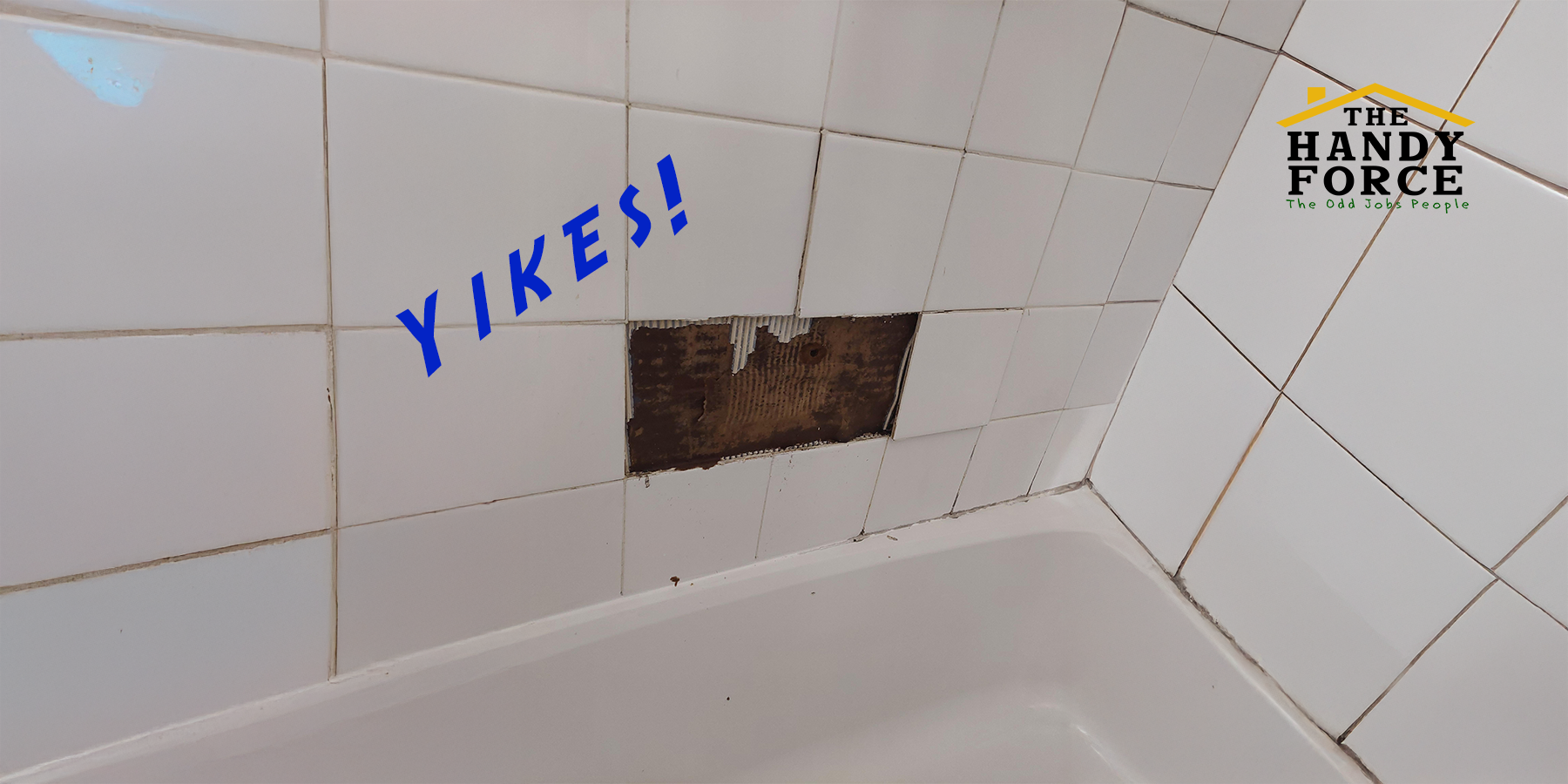At The HandyForce, we’ve seen it all when it comes to bathroom renovations. Our team often gets called in to fix issues like grout cracking or tiles popping off the wall—problems that can turn a beautiful new bathroom into a frustrating headache. While there are many reasons a renovation might fail, one stands out as the #1 culprit: using the wrong backing material behind the tiles in your shower. Too often, we see drywall used in these wet areas, and when it gets damp, it loses its integrity, leaving your stunning tile work vulnerable to damage. That’s why we’re passionate about educating homeowners on the importance of choosing the right backing material—specifically Schluter Kerdi-Board or cement board—to ensure your bathroom stands the test of time.
Why Backing Material Matters
When you’re planning a bathroom renovation, it’s easy to focus on the fun stuff: picking out gorgeous tiles, sleek fixtures, and the perfect vanity. But what’s behind those tiles is just as critical. The backing material serves as the foundation for your shower walls, providing stability and protection against water—the biggest enemy in any bathroom. Showers are wet zones, and even with proper sealing, moisture can seep through grout lines or tiny cracks over time. If the material behind your tiles can’t handle that moisture, you’re setting yourself up for problems like mold growth, structural damage, and those all-too-common issues of grout cracking and tiles popping off.
The Drywall Disaster
Drywall might be a go-to for other areas of your home, but in a shower, it’s a recipe for trouble. Standard drywall (and even moisture-resistant “greenboard”) simply isn’t designed to withstand the constant exposure to water that a shower demands. When drywall gets wet, it softens, swells, and eventually disintegrates, compromising the bond with your tiles. The result? Cracked grout, loose tiles, and, in the worst cases, a full-blown renovation redo. We’ve had countless clients call us in a panic because their “new” bathroom started showing these signs just months after completion—all because the original installer cut corners with drywall.
The Right Choice: Schluter Kerdi-Board or Cement Board
So, what’s the solution? At The HandyForce, we recommend two tried-and-true options for shower backing: Schluter Kerdi-Board and cement board. Both are designed to handle the unique challenges of a wet environment, ensuring your bathroom renovation stays beautiful and functional for years.
- Schluter Kerdi-Board: This innovative product is a game-changer in the world of bathroom renovations. Made from lightweight, waterproof extruded polystyrene foam with a reinforced surface, Kerdi-Board is a multifunctional tile substrate that doubles as a bonded waterproofing layer. Unlike drywall, it won’t break down when exposed to moisture, and its built-in waterproofing means you don’t need an additional membrane in many cases. It’s easy to cut and install, making it a favorite for both pros and DIYers. Plus, its durability ensures a solid base that keeps tiles firmly in place—no cracking grout or popping tiles here. At The HandyForce, we love using Kerdi-Board for its reliability and the peace of mind it brings to our clients.
- Cement Board: A classic choice, cement board (like HardieBacker or Durock) is another excellent option for shower walls. Made from a mixture of cement and reinforcing fibers, it’s tough, water-resistant, and provides a stable surface for tile adhesion. While it’s heavier and messier to work with than Kerdi-Board, it’s a cost-effective solution that gets the job done right. When paired with a waterproofing membrane (like Redgard or a Schluter Kerdi membrane), cement board creates a rock-solid barrier against moisture, protecting your investment and preventing those costly callbacks we so often see with drywall.
Why It’s Worth the Investment
Choosing Schluter Kerdi-Board or cement board might cost a bit more upfront than slapping up some drywall, but trust us—it’s an investment that pays off. These materials are purpose-built to handle the damp, humid conditions of a shower, meaning fewer repairs down the road and a bathroom that looks as good as new for decades. When you hire The HandyForce for your premier bathroom renovation, we prioritize quality at every step, from selecting the right backing material to ensuring flawless tile installation. Our goal is to deliver a space you’ll love without the stress of future fixes.
Don’t Let Your Dream Bathroom Fall Apart
Grout cracking and tiles popping off are more than just cosmetic issues—they’re signs of a deeper problem that could have been avoided with the right materials. At The HandyForce, we’ve seen firsthand how cutting corners with drywall leads to disappointment. That’s why we’re committed to using Schluter Kerdi-Board or cement board in our shower installations, giving you a bathroom that’s not only stunning but built to last.
Ready to start your bathroom renovation the right way? Contact The HandyForce today to schedule a consultation. Let’s create a space that’s beautiful, durable, and worry-free—because you deserve nothing less. Visit us at thehandyforce.com to learn more about our premier bathroom renovation services!


